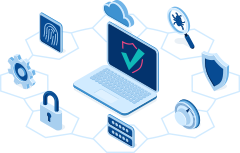-
Challenges of Rapid Response Systems in Hospitals
Real-time Monitoring Challenges: Current Rapid Response Systems (RRS) often struggle with real-time monitoring, especially in general wards, affecting safety of high-risk patients.
Delayed Data Entry: Vital signs are recorded every 2-4 hours during nurses' rounds, causing entry delays into the Electronic Medical Record (EMR) system
Specialized Monitoring Needs: Specific patient groups, such as post-surgery or transferred from ICU, require real-time monitoring for early intervention.
-
Introducing IndoorPlus+ Vital Sign Monitoring
Real-time Vital Sign Monitoring: For Patients needing continuous observation, vital signs are measured real-time using dedicated monitors or wearable medical devices.
Automatic EMR Integration: Vital signs are seamlessly logged into the EMR system in real-time, eliminating the need for manual data entry by nurses.
Enhanced RRS: The system integrates with existing RRS, allowing for immediate identification of at-risk patients and swift response by the Rapid Response Team (RRT).
-
Main Benefits of IndoorPlus+ Vital Sign Monitoring
Improved Patient Outcomes:Real-time monitoring enables proactive actions, improving the quality of patient care and outcomes.
Efficiency:Nurses' workload is significantly reduced, ensuring more timely response to patients' needs.
Safety of High-Risk Patients: Real-time monitoring is especially crucial for surgical patients, those transferred from the ICU, and critically ill patients, optimizing their care.
- Brochure DownLoad


